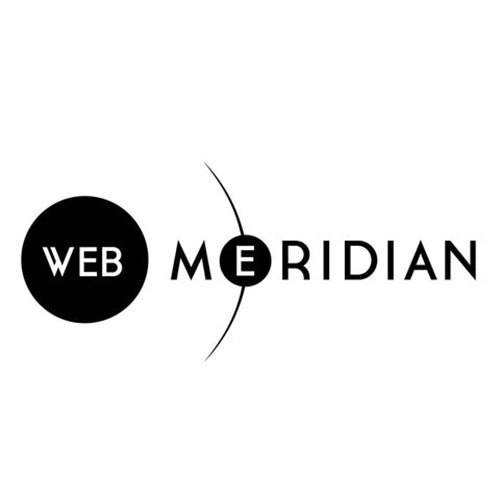Hyvä vs. Luma Magento Theme Comparison: The Battle Royale
The article was initially published in WebMeridian blog.
On top of offering a respectable product at a great price to compete, Magento 2 merchants must consider the presentation. That is where a Magento 2 front-end theme comes in.
Themes are not just a way to decide what your store will look like but can affect other aspects of its performance, security, and perception by the intended target audience. Hundreds of themes are available to Magento users, but today, we are looking at Hyvä and Luma.
We will pit these Magento frontend themes against each other to see how they stack up, what they are best for, and where they have shortcomings to help you decide which would work best for your purposes.
Let’s dive in to find out more about these Magento front-end themes.
What is Luma?
Luma is one of the default themes you get when using Magento 2. Being a demo theme, does it have what you need? Well, that is what we are here to find out. The theme has a responsive design, product display, catalog navigation, checkout process, and more.
The Luma template is designed to be a modern theme, focusing on the online store’s visual appeal and user experience. The theme uses white space judiciously, creating a professional and attractive look for Magento eCommerce stores.
The Luma theme is based on the Blank theme, a basic theme meant to provide the essential components and structure you can use to create a custom version. Luma works the same way, allowing you to modify or edit the default files to create a theme inherited from the parent.
To understand this theme better, we have to look at the advantages and disadvantages of working with it.
The Advantages of Using Luma
For those who choose it, Luma benefits them in the following ways:
1. Luma is free and official
As we’ve mentioned, the Luma theme comes with Magento 2, meaning you do not have to pay any extra cost or install a third-party theme to get started. Luma is compatible and updated to the latest version of Magento 2 and is an excellent template for those looking for extensive customization.
2. Luma is mobile-friendly and responsive
In 2023, US mobile commerce is expected to reach $447.5 billion, accounting for 41.6% of total eCommerce sales. Given that the competition is higher than it’s ever been, every eCommerce store owner has every reason to make their website more optimized for mobile and be able to fit it onto any device, including tablets, smartphones, desktops, and more.
With a great team of Magento developers, Luma is a great way to reach more customers and improve your SEO ranking.
3. Luma is a demo theme
The power of a demo theme like Luma is that it is designed to showcase the features and capabilities to you more clearly. This means you can use it to learn about Magento 2 development and customization. It shows you how it implements the core components and functionalities of Magento 2, including the template, block, layout, widget, and more.
4. Luma is fast and secure
Being an official theme, Magento 2’s developers took time to ensure that Luma is fast and secure, meaning your store loads quickly and smoothly, directly impacting your conversion rate and customer satisfaction. In addition, it supports multiple payment and shipping methods, all in a secure manner.
5. Luma is contemporary and elegant
As the skin your Magento 2 store wears, your theme must stand out visually. With Luma, you can customize as much of the base theme as you want to create a look true to your store’s branding and overall style. This includes the colors, fonts, images, arrangement, etc.
The Drawbacks of Using Luma
1. Heavy and complex
Luma may be easy to use out of the box but loads many unnecessary front-end resources and elements. That translates to a much slower website, affecting your SEO ranking and conversion rate. According to one source, Luma has 256 requests and 0.9MB of load size for a product page, while Hyvä has only 11 requests and 0.15MB for a similar page.
2. Luma is a demo theme
We know; we already said this in the benefits. However, a theme meant to showcase the best an ecommerce platform offers will have features and functionalities you do not want or need, including wish lists, ratings, reviews, swatches, compare lists, etc.
3. Luma is difficult and time-consuming
Developers will quickly tell you that customizing or maintaining Luma is hard, especially given the alternatives. If you choose to work with the Magento 2 Luma theme, be prepared to enlist the services of a professional developer or learn some advanced skills to modify or edit the default files. You may encounter compatibility issues and conflicts with third-party extensions or updates.
There’s more to say about Luma’s shortcomings, but they all rotate around it being a somewhat bloated theme and not the most developer-friendly option on the market.
Let’s get to Hyvä.
What is Hyvä?
What do you get when you improve on the basic Luma, which we have already seen is respectable? One word: Hyvä.
The Hyvä template was designed to simplify and improve the frontend development of Magento 2 stores. Hyvä is not a headless, PWA (progressive web app) or JavaScript-based theme, but instead based on PHP. It uses the built-in templating system of Magento 2 and is built from scratch using a blank theme that removes all the unnecessary bloat and complexity that comes with the default Luma theme.
The Hyvä theme leverages modern tools that developers enjoy using, including AlpineJS, and TailwindCSS, to create a user-friendly, fast-loading, responsive website. Let’s explore its benefits and drawbacks to create a more complete picture.
The Benefits of Using Hyvä
Let’s start with the Hyvä benefits to see what this theme offers you.
1. Hyvä is lightweight and simple
Hyvä is a lightweight and straightforward theme that eliminates the unnecessary bloat you may have to deal with when using the Luma theme. This saves you time and effort during Hyvä themes development for Magento 2. Hyvä also reduces the number of resources loaded on the front from more than 200 to 2, which improves your website speed and performance.
2. Hyvä is modern and user-friendly
This theme uses AlpineJS and TailwindCSS to create an attractive, fast, and impressive website that will appeal to customers and create a user-friendly website that showcases products and services. With competent Hyvä themes developers, you can customize the look to match your brand identity and style, including changing the fonts, images, colors, and more.
3. Hyvä is feature-rich and extension-friendly
You can get various features and functionalities to help you create a successful online store, including multi-language, a blog module, social media integration, multi-currency, etc. Hyvä also comes with pre-built templates that can be easily installed and customized.
The theme is compatible with over 10 extensions and is trusted worldwide by Hyvä themes development services.
4. Hyvä is inspirational and educational
Just like its counterpart Luma, Hyvä is also an educational and inspirational tool with its unique take on the developmental process. It is based on the same core components and structure as Magento 2, including layout.xml, blocs, viewModels, etc.
For a Magento Hyvä theme development company, it represents a canvas on which any vision for an eCommerce store can be drawn.
5. Hyvä is community-driven & open source
The Hyvä theme welcomes developers’ contributions and feedback with communities on GitHub, Twitter, and Slack. Even without a Hyvä solution provider, you can access the tutorials, demos, and documentation to help develop and improve the theme over time.
6. Hyvä is designed to be future-proof
The development of Hyvä is done by developers designing for the benefit of the eventual developers who interact with these themes at length and in-depth.
As such, it followed the best practices and standards of web development to offer compatibility with the latest version of Magento 2, with support for upcoming features and updates to the underlying platform. Hyvä also uses modern tools and technologies that enhance the functionality and usability of the theme.
The Disadvantages of Using Hyvä
Because it is developed to be developer-friendly, lightweight, and simple, Hyvä has few weaknesses, but it is worth mentioning what to expect or watch out for.
1. Licensing fee
The Hyvä licensing fee in 2023 stands at €1,000.00 per license, while the Hyvä checkout seems to have been discounted from €1,000 to €500 per license on the annual payment, with one year support and updates included. The subscription model costs €250 yearly, starting the second year after the initial purchase.
A one-time payment model is offering 5 years of support and updates at €1,000.00
You can contact Hyvä for a volume discount for more than one license. A licensing fee may seem daunting for those starting and looking to minimize cost.
2. Non-compatibility with some extensions and Magento’s B2B module
Although the theme makes a Magento website load quickly, it needs some work to implement initially because it’s incompatible with all the extensions on the Magento Marketplace. As such, you may need Magento Hyvä theme development services to create workarounds for a smoother operation.
3. Some code conversion is needed
All the bloat Hyvä removes has a downside. While you can still use modules from third-party services, additional coding might be required to ensure the front end looks and works as intended on this Magento 2 theme.
Hyvä vs Luma: Performance Comparison
A theme’s performance is vital to a store, given that the performance level directly affects the overall customer experience and can decide your customer’s buying journey. How do they stack up when pitted head-to-head with each other?
It comes as no surprise that Hyvä outperforms Luma on many of the performance metrics. It sheds the extra weight Luma comes with and is developed by developers for developers, in addition to having nearly perfect Google Page Speed scores out of the box.
Out of the box, Luma is good too, but the performance starts to dip as you add things and make changes. According to this blog post about an Amazon study and others discussed by Forbes, companies have milliseconds to load pages or risk losing potential revenue. Since these studies were done, the situation hasn’t gotten any easier, which is why a lot of emphasis is placed on loading speeds.
The message is clear; the longer a person waits to access what they seek, the more likely they will click back or bounce.
Using Google Lighthouse, most of the tests done by developers using these themes have shown an apparent disparity in performance between the two themes. Luma is slower because it is bloated, while Hyvä loads much faster due to its lean design.
Conclusion: Hyvä or Luma for Magento 2
Are you looking for a reliable and professional Luma or Hyvä development company that can create impressive websites for your Magento 2 store?
At WebMeridian, we have a team of developers with the knowledge depth required for development with Hyvä and Luma, allowing you to choose whichever one you feel best fits your current needs.
We can help you design and build custom themes and components to make your website stand out. Whether you need a simple landing page or a complex eCommerce site, we can handle it all with Luma and Hyvä.
With Luma, we know how to get the best out of what we have admittedly called a bloated theme. However, it is worth noting that it is not an unsuitable theme for all applications. Given that it has to function as a demo theme and template, it is unsurprising that Luma is slower and seems more bloated when compared with the lean Hyvä.
With Hyvä, our expert developers will put their skills to task, creating a cohesive look and workarounds for the theme portions that don’t quite fit without some work. Our team is focused on streamlining development to get the best out of what a theme offers out of the box and compensate comprehensively for its shortcomings.





